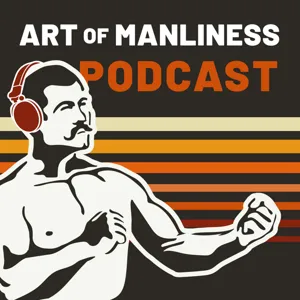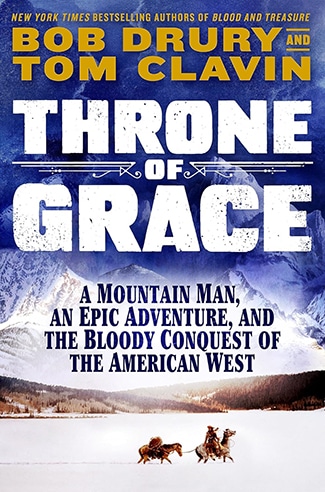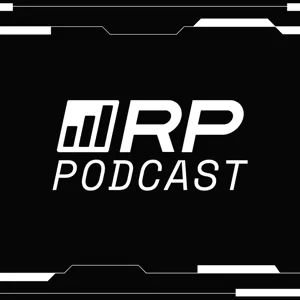Podcast Summary
The Science Behind Caffeine: Blocking Adenosine for Energy: Caffeine is a drug that blocks adenosine to give us energy, widely consumed globally with various consumption methods, has benefits but also risks.
Caffeine, a naturally occurring drug found in various plants, works by blocking the neurotransmitter adenosine, which makes us feel tired. By doing so, caffeine gives us a feeling of increased energy and stimulation. This simple mechanism has made caffeine a daily habit for over 80% of the world's population. From ancient coffee ceremonies to modern energy drinks, the way we consume caffeine has evolved throughout history. Caffeine is a drug, and while it can have benefits such as enhancing athletic performance and boosting mental alertness, it can also have downsides, including addiction and negative health effects. Understanding the science behind this beloved substance can help us make informed choices about our daily caffeine consumption.
Discoveries of Caffeine in Different Parts of the World: People independently discovered and used caffeine-containing products like cacao, tea, and coffee for energy and mood enhancement thousands of years ago
The use of caffeine, a stimulant that enhances energy and focus, can be traced back to independent discoveries in various parts of the world thousands of years ago. Archaeological evidence shows that people in Mexico were consuming cacao, a caffeinated product, around 3,000 years ago. In China, tea culture emerged around the same time. In Africa, people were consuming Yopon Holly and eventually discovered coffee around a thousand years ago. These discoveries were made independently by different groups of people without any connection to each other. Caffeine was not just valued for its stimulant effects but also for its ability to make people feel good. Coffee took root in America and became a popular beverage throughout its history, particularly during the World War II era. The discovery and use of caffeine demonstrate the human drive to find ways to cope with fatigue and exhaustion, which has been a constant throughout history.
Caffeinated sodas displaced coffee as Americans' primary source of caffeine: From the late 19th century, Americans shifted from coffee to caffeinated sodas due to convenience, affordability, and a less enjoyable coffee experience. Today, we consume less coffee per capita than our great-grandparents.
The increase in popularity and availability of caffeinated sodas, such as Coca-Cola, starting in the late 19th century, led to a decline in coffee consumption in the United States. Despite the ubiquity of coffee shops today, Americans consume less coffee per capita than our great-grandparents did in the late 40s and 50s. This shift can be attributed to the convenience and affordability of sodas, which displaced coffee as the primary source of caffeine for many Americans. Additionally, the processing methods for coffee during that time, such as long-distance shipping, roasting, and percolation, resulted in a less enjoyable drinking experience compared to the freshly roasted and ground beans we have access to today. The temperance movement initially promoted sodas as a healthier alternative to alcohol, but eventually, their high caffeine content came under scrutiny, while coffee, which also contains caffeine, faced less criticism.
Coca-Cola's Complex History with Caffeine: Coca-Cola initially contained high levels of caffeine, but faced regulatory challenges due to concerns over addiction and marketing to children, leading to reduced caffeine content and a shift away from energy drink-like versions. The debate over caffeine's role in consumption and purchase patterns continues.
The history of Coca-Cola involves a complex relationship with caffeine and regulatory challenges. Originally, Coca-Cola contained a significant amount of caffeine, similar to modern energy drinks. However, due to concerns over addiction and marketing to children, the beverage faced regulatory challenges in the early 1900s. As a result, Coca-Cola reduced the caffeine content, and the original energy drink-like version of the beverage was largely gone by the 1920s or 1930s. Despite this, Coca-Cola and other soda manufacturers understood that caffeine was a stimulant and addictive, but they did not want to market it as such. The question of how much caffeine drives consumption and purchase patterns of sodas and energy drinks remains unanswered, and the debate over regulation continues. Notably, eight of the top 10 selling sodas in America are caffeinated, indicating the market's preference for caffeinated beverages.
Energy Drinks: From Hidden Caffeine to Transparent Labeling: From initial downplay of caffeine content to current transparency, energy drink marketing has evolved significantly, with regulatory frameworks playing a role in shaping disclosure requirements.
The energy drink market took off in the late 90s and early 2000s, with Red Bull being a pioneer in direct marketing of the stimulating effects of the drink. Initially, energy drink manufacturers downplayed the caffeine content due to regulatory uncertainty. However, as Red Bull's success paved the way, other manufacturers followed suit, gradually becoming more open about the caffeine content. The regulatory framework evolved, and the FDA came down on the side of marketing energy drinks as beverages rather than supplements. In the early days, energy drinks often didn't disclose the exact caffeine content, but now, it's more common to see the caffeine content listed on the label.
Improving Transparency in Caffeine Labeling: Consumers face challenges in determining daily caffeine intake due to various sources and inconsistent serving sizes. Coffee is the primary source, but daily intake should be around 250-300 mg for coffee drinkers, with a limit of 400 mg.
Transparency in caffeine labeling is improving, with companies like Coca-Cola now clearly stating the amount of caffeine in their products. However, it can still be challenging for consumers to determine their daily caffeine intake due to the various sources and inconsistent serving sizes. Coffee remains the primary source of caffeine for most people in the US, despite consuming more soda daily, but the recommended daily intake is around 250-300 milligrams for coffee drinkers, with a limit of 400 milligrams suggested by health experts. It's essential to be aware of these factors to maintain a healthy caffeine consumption level.
Genetic factors influence caffeine's effect on athletic performance: Optimal caffeine dose for enhancing athletic performance is around 3-6mg/kg, improving endurance by 1-3% in races.
Caffeine's effect on individuals varies greatly due to genetic factors, and the optimal dose for enhancing athletic performance is around three to six milligrams per kilogram of body weight. This could translate to significant improvements in endurance events, with an average increase of 1-3% in race times. However, it's crucial to consider the potential drawbacks, such as stress, anxiety, and stomach upset, which could offset any performance benefits. Despite its performance-enhancing properties, caffeine is not banned in most athletic competitions.
Caffeine in Sports: Performance Enhancement or Ethical Dilemma?: Athletes use caffeine for performance enhancement, but ethical concerns arise due to its unregulated status in sports. Potential health benefits may justify its use, but more research is needed.
Despite being a common substance with therapeutic doses similar to an average American's daily consumption, caffeine remains unregulated in sports due to its inconsistent performance enhancement effects. High-performance athletes have developed precise caffeine strategies to optimize their performance, viewing it as no different from their meticulous dietary habits. While ethical concerns arise due to its specific use for enhancing athletic performance, the widespread acceptance of caffeine use suggests a growing acceptance of its role in sports. Furthermore, research suggests potential health benefits of caffeine, including a reduced risk of suicide, lower incidence of basal cell skin cancers, and a decreased risk of mortality. However, more research is needed to confirm these associations.
Caffeine: Health Benefits and Risks: Moderate caffeine consumption can benefit health, but be aware of risks like sleep disruption and increased anxiety. Pregnant women and those with insomnia or anxiety should limit intake.
While moderate consumption of caffeinated coffee and tea may offer health benefits, it's essential to be aware of potential downsides, especially for individuals sensitive to caffeine. The most notable risks include disrupted sleep and increased anxiety. For those suffering from insomnia or anxiety, experimenting with reducing or eliminating caffeine intake could lead to improved sleep quality and reduced symptoms. Additionally, pregnant women and those planning to become pregnant should limit their caffeine consumption due to potential risks to the developing fetus. Overall, while caffeine can provide energy and focus, it's crucial to consider individual sensitivities and potential health consequences.
Negative effects of caffeine on pregnancy: Caffeine, a common ingredient in popular beverages, can increase miscarriage risk and lower birth weight, and exhibits addictive patterns.
Caffeine, a common ingredient in popular beverages like coffee and soda, can have negative effects on pregnancy, including an increased risk of miscarriage and lower birth weight babies. Additionally, caffeine is considered an addictive substance, with withdrawal symptoms such as headaches, edginess, and muscle aches when one tries to quit. Despite not being as socially stigmatized as other addictive substances, caffeine still exhibits addictive patterns. After researching and writing his book "Caffeinated," author Murray Carpenter moderated his own caffeine consumption and encourages others to be aware and strategic in their use of caffeine. For more information on Murray Carpenter and his work, visit his website muricarpenter.com, and check out his upcoming book on Coca-Cola and health.
Explore Art of Manliness website, sign up for Stitcher Premium, and leave a review: Engage with the Art of Manliness content, sign up for ad-free podcast, and share with others to learn and grow together
Brett McKay encourages listeners to explore the extensive collection of articles on Art of Manliness' website, sign up for Stitcher Premium for ad-free podcast episodes, and leave a review to support the show. He also invites listeners to share the podcast with others who might benefit from it. By engaging with the content and spreading the word, we can all continue to learn and grow together. And remember, it's not just about listening – put what you've learned into action. So, head over to www.artofmanliness.com or sign up for Stitcher Premium today, and join the community of lifelong learners.













